How the latest porcelain surfaces offer both form and functionality
Tue 15th Nov 2022 by Lisa Hibberd
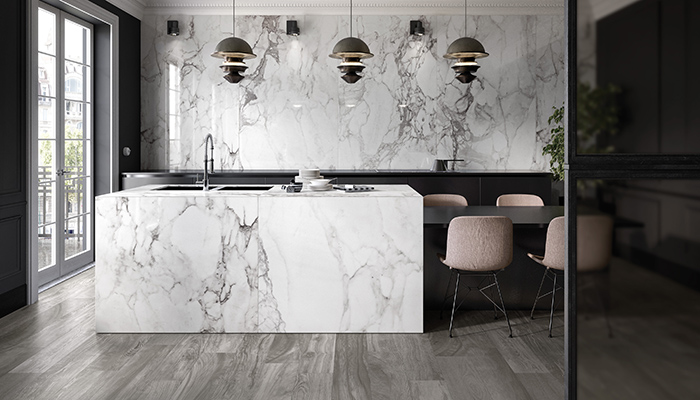
How the latest porcelain surfaces offer both form and functionality
Boasting a multitude of practical properties as well as aesthetic appeal, it’s no surprise that porcelain and ceramics are proving popular choices for many kitchen projects. Lisa Hibberd takes a look at some of the latest designs and talks to those in the know about the benefits of these versatile materials.
“The market for porcelain and ceramic surfaces in the kitchen has grown, with consumers looking for a worktop that is low maintenance and hardwearing yet also wanting a surface that creates a high-end impression,” reports Ben Bryden, sales and marketing director of RAK Ceramics. “While materials such as marble, granite and concrete are on-trend in the industrial-style kitchen, porcelain lookalikes make achieving this look much more accessible for consumers. Porcelain and ceramic offer many advantages that account for their popularity, not least that they add an element of luxury to a design. Often more affordable than alternatives such as solid natural stone worktops, porcelain is highly durable and simple to maintain. Completely customisable to any design, it’s a hugely flexible design choice, and creates a seamless finish that is now often used as a stand-out feature, perhaps as a splashback or as a complete run on a kitchen island.”
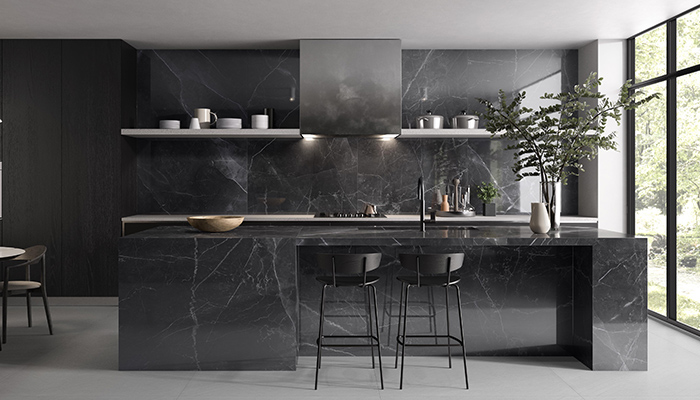
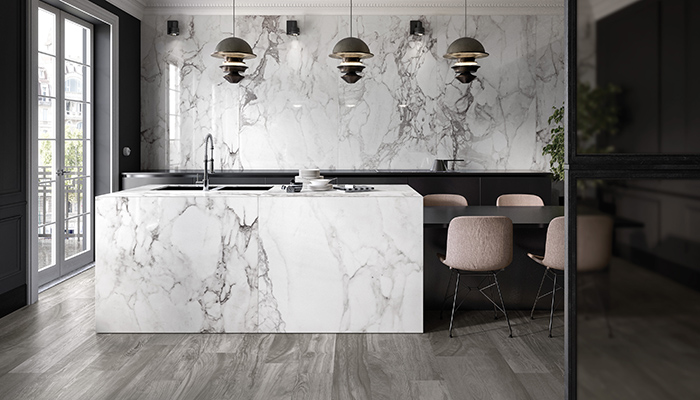
Caesarstone’s head of design, Mor Krisher, suggests that the trend for incorporating organic textures and earthy tones into the kitchen is also growing in popularity. “It's a wonderful way of creating a calming environment in the home. Bringing a touch of the outside in through raw materials and nature-inspired designs promises to instantly uplift a kitchen and connect us to our surroundings. If a client chooses a worktop that incorporates these earthy tones and textures, they instantly create a cosy environment that links their space with the natural world. A neutral surface also offers flexibility – ideal for those who like to update their kitchen with the seasons. The beauty of opting for porcelain in a kitchen design is that consumers can achieve the aesthetic they love without compromising on durability. Whether they’re aiming for a bolder, dramatic kitchen style with a darker hue or looking to create a light, natural atmosphere with something softer, then this material can offer just that.”
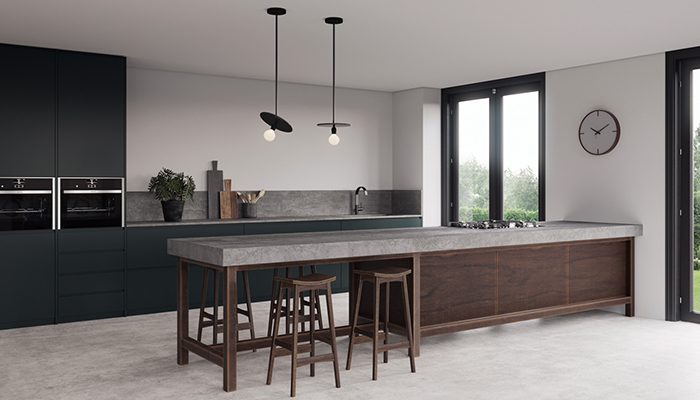

“Porcelain worktops are extremely hardwearing with a high breaking point, making them an excellent choice for use for kitchen,” says Jo Oliver, director of The Stone & Ceramic Warehouse. “Porcelain is both scratch and stain-resistant allowing you to chop directly onto the surface without leaving marks or stains. It can also withstand high temperatures meaning that pots, pans, and hot oven trays can be placed straight onto the worktop, without fear of irreversible scorching. Porcelain is resistant to UV rays and can also withstand many of the chemicals often found in cleaning products.”
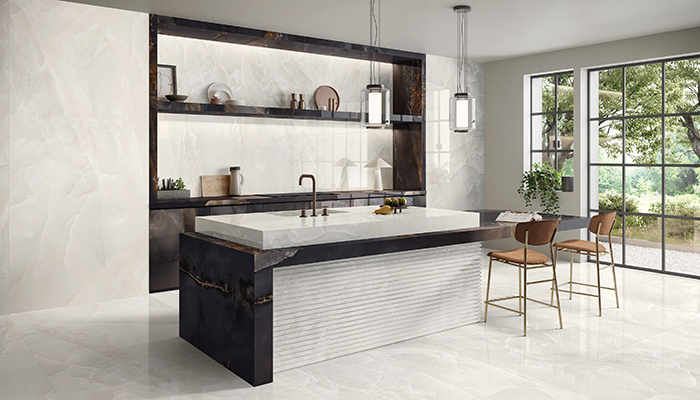
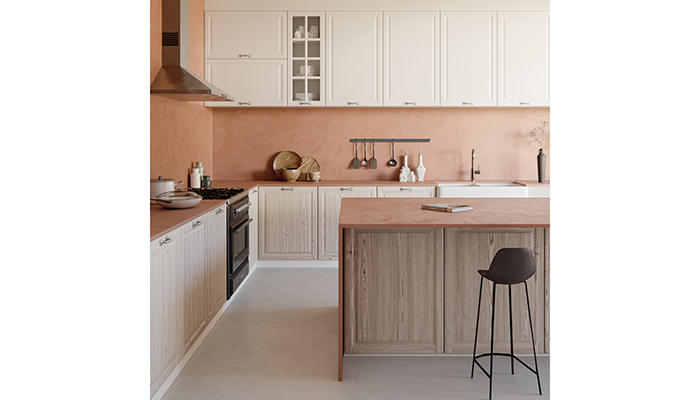
Ceramic surfaces are growing in popularity for similar reasons, according to Oliver Webb, director of Cullifords. “Ceramic is extremely durable and resistant to scratches, chemicals, heat and staining. As an example, SapienStone worktops are crafted from ceramic clays and mineral colourings, and available in a range of colours and finishes, so they can cater to a variety of consumer tastes from the ultra-contemporary to a more traditional style. The material is UV resistant and can therefore be used outside too, and as the pattern is made from a photograph, the colours can be easily changed to meet market demand. At just 12mm thick, SapienStone is ideal for creating a very sleek looking finish in a kitchen design.”
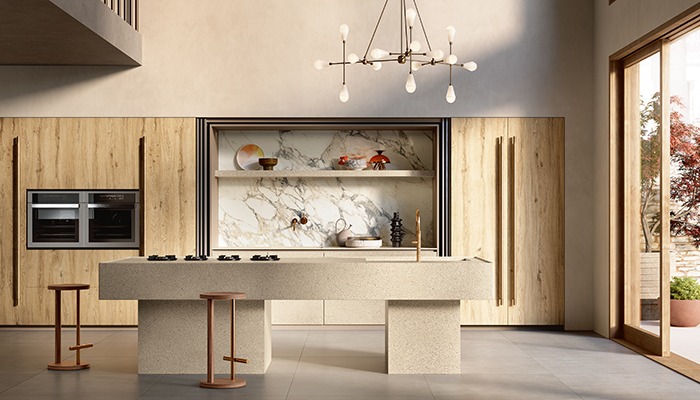
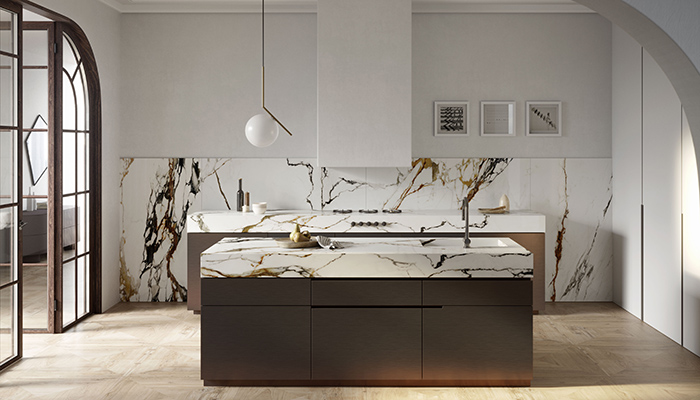
Simon Boocock, managing director of CRL Stone, believes that the power of the sale of these materials lies in the display, which should be carefully considered by retailers. “Think about how you can showcase the sheer range of style options available with ceramic by making good use of POS and brochures and offer the opportunity for customers to take away samples so they can colour match in real terms. Don’t be afraid to really show off the practical qualities of the surface too, as this is a major selling point – encourage customers to wipe away spillages, for example, so the benefits are visible.”
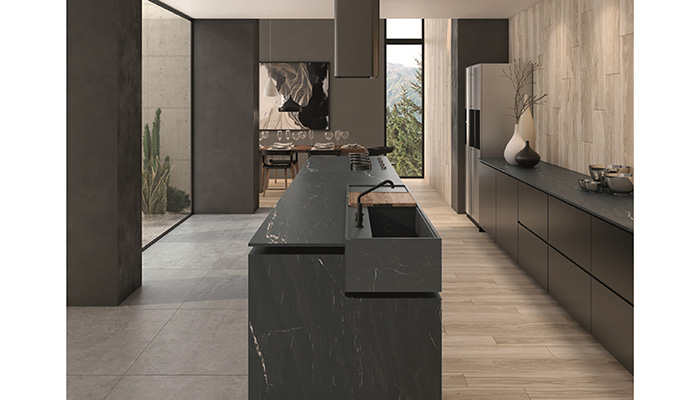
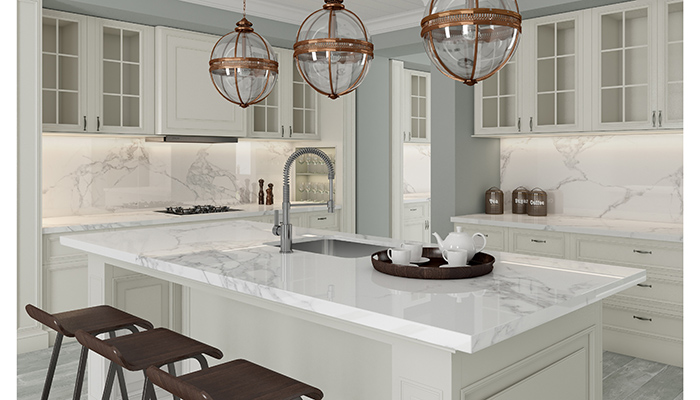
Tags: kitchens, features, porcelain surfaces, rak ceramics, caesarstone, laminam, stone and ceramic warehouse, cosentino, cullifords, porcelanosa, crl stone
Sign up to our newsletter
Most Read
Crown Imperial – 5 ‘must have’ kitchen trends for 2026
Sun 21st Dec 2025


























